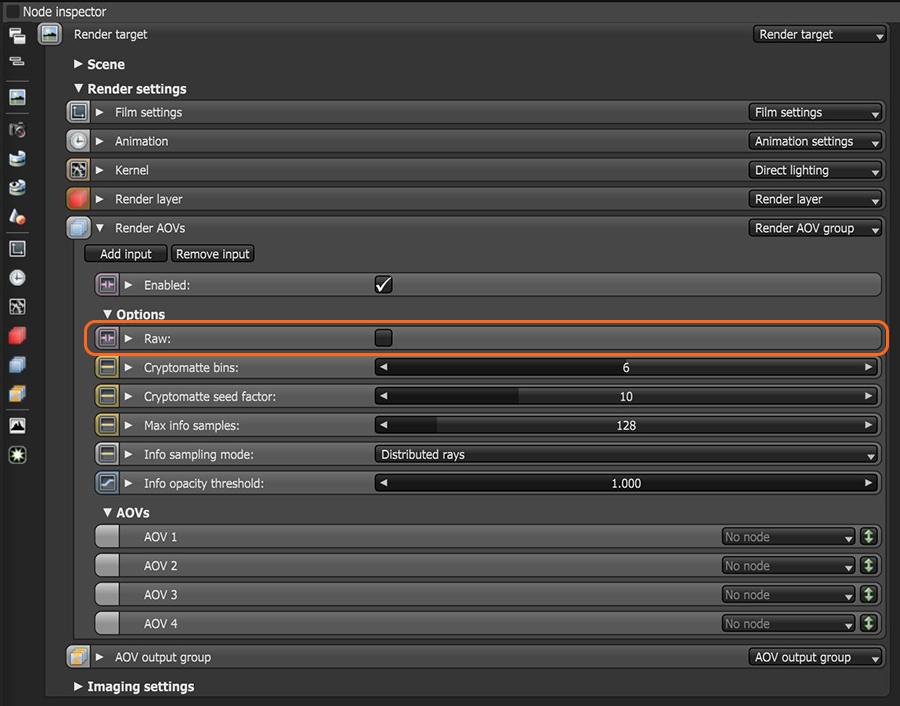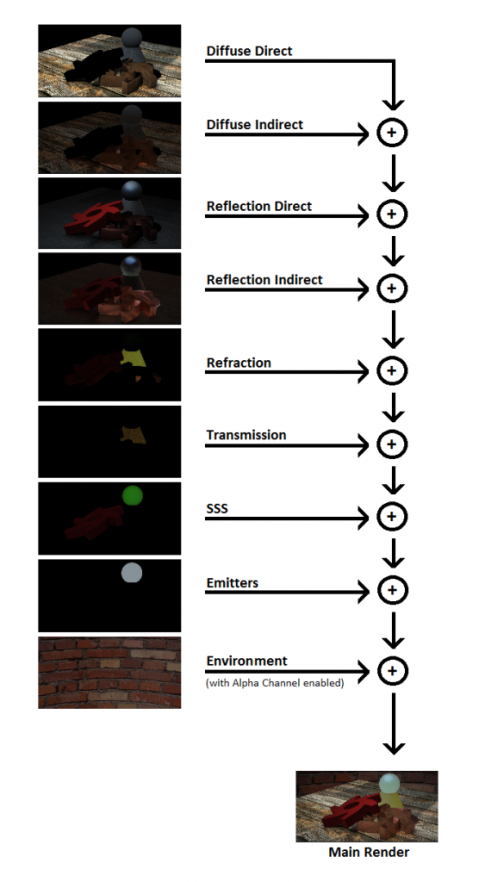
The Beauty Surfaces and Volumes categories of AOVs provide rendered images of different aspects related to lighting the scene such as shadows, highlights, reflections, illumination, and color. Beauty passes are rendered together with the main beauty pass. Each one of these requires its own frame buffer that needs to be stored in addition to the main frame buffer. Beauty Passes are separated into two categories: Surfaces and volumes.
Raw rendering allows more control over the final look in post-production. The RAWIn HDR imaging, this refers to minimally processed HDR image formats. Raw files can have 12 or 14 bits per color channel, although the available dynamic range might be cut down due to noise. render checkbox can be found in the Render AOV Group node parameters (figure 1). Toggling Raw passes does not restart the render.

Figure 1: The Beauty passes are activated in the Render PassesRender passes allow a rendered frame to be further broken down beyond the capabilities of Render Layers. Render Passes vary among render engines but typically they allow an image to be separated into its fundamental visual components such as diffuse, ambient, specular, etc.. settings
You can composite these passes together by multiplying the Raw pass with its matching filter pass:
Figure 2 shows what a sample composition looks like in Nuke® using the above passes.

Figure 2: A sample composition in Nuke® using the above passes
To get a good result, make sure that all images are saved as HDR EXRAlso known as OpenEXR. This image file format was developed by Industrial Light & Magic and provides a High Dynamic Range image capable of storing deep image data on a frame-by-frame basis. files with linear color space (i.e., Gamma is set to 1 and linear camera response).

Figure 3: Reassembling the basic Beauty passes with the additive blend mode in third-party compositing applications